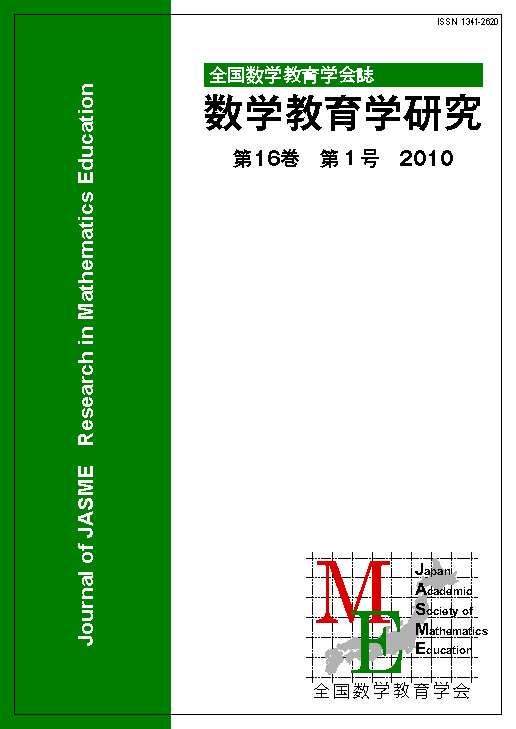16 巻, 1 号
数学教育学研究
選択された号の論文の9件中1~9を表示しています
- |<
- <
- 1
- >
- >|
-
原稿種別: 本文
2010 年 16 巻 1 号 p. 1-14
発行日: 2010年
公開日: 2019/01/17
PDF形式でダウンロード (3198K) -
原稿種別: 本文
2010 年 16 巻 1 号 p. 15-25
発行日: 2010年
公開日: 2019/01/17
PDF形式でダウンロード (1318K) -
原稿種別: 本文
2010 年 16 巻 1 号 p. 27-33
発行日: 2010年
公開日: 2019/01/17
PDF形式でダウンロード (1058K) -
原稿種別: 本文
2010 年 16 巻 1 号 p. 35-42
発行日: 2010年
公開日: 2019/01/17
PDF形式でダウンロード (1015K) -
原稿種別: 本文
2010 年 16 巻 1 号 p. 43-56
発行日: 2010年
公開日: 2019/01/17
PDF形式でダウンロード (1609K) -
原稿種別: 本文
2010 年 16 巻 1 号 p. 57-63
発行日: 2010年
公開日: 2019/01/17
PDF形式でダウンロード (748K) -
原稿種別: 本文
2010 年 16 巻 1 号 p. 65-71
発行日: 2010年
公開日: 2019/01/17
PDF形式でダウンロード (963K) -
原稿種別: 本文
2010 年 16 巻 1 号 p. 73-85
発行日: 2010年
公開日: 2019/01/17
PDF形式でダウンロード (1415K) -
原稿種別: 本文
2010 年 16 巻 1 号 p. 87-97
発行日: 2010年
公開日: 2019/01/17
PDF形式でダウンロード (1229K)
- |<
- <
- 1
- >
- >|
